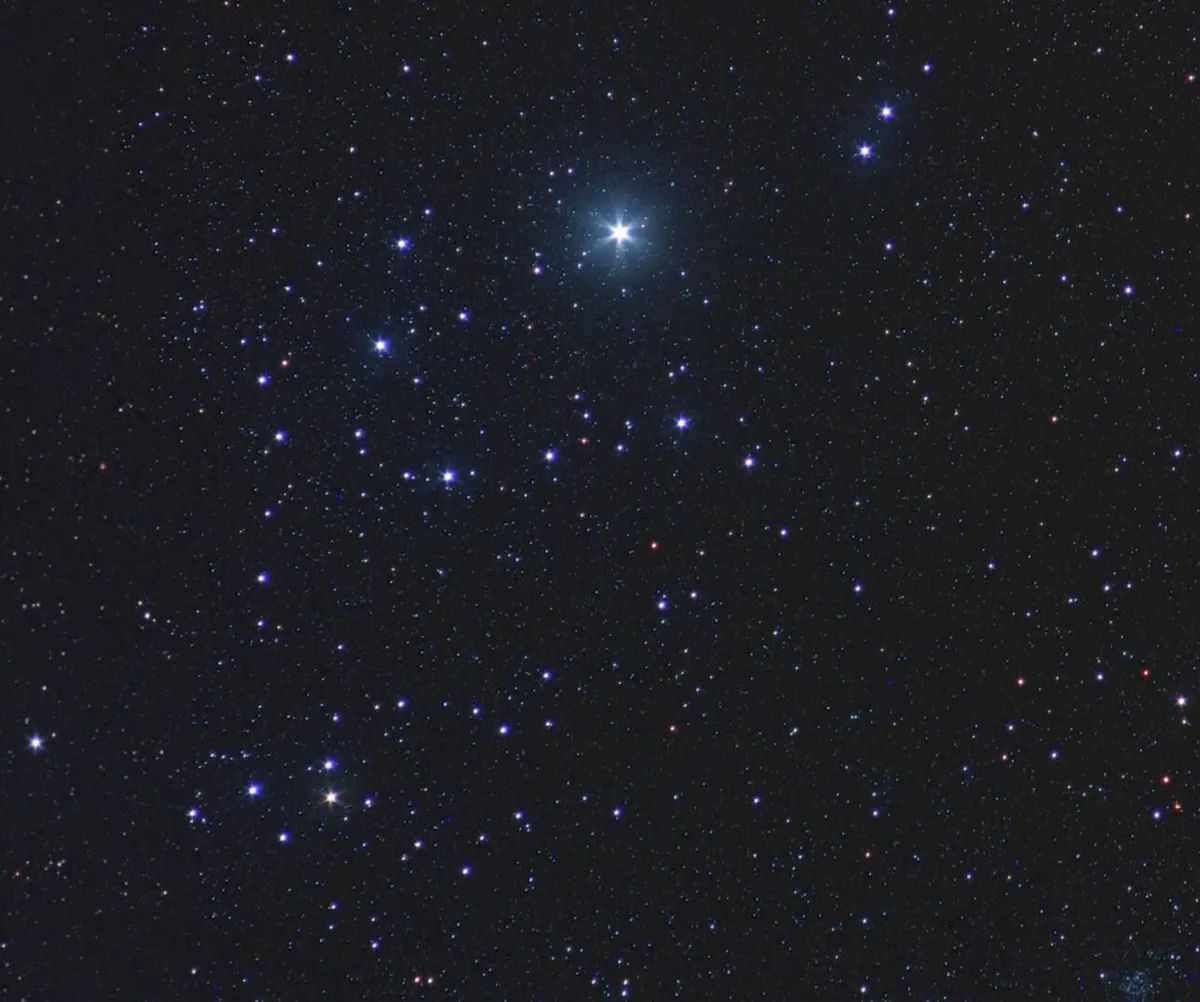The most striking thing about Mirphak (Alpha α Persei), when you look at it through binoculars, is the small semi-circular pattern of stars that appears to nestle around it.
There is a connection here as many of these stars belong to a cluster known as the Alpha Persei Cluster or Melotte 20.

Observing Mirphak
The constellation of Perseus is an awkward shape to describe while standing out under the stars.
It represents the Greek Hero, Perseus, but trying to place stars and patterns within the constellation to match up with a hero can be challenging.

In translation Mirphak means elbow but this relates to a larger meaning where it is referred to as ‘the elbow of the Pleiades’.
To the naked eye Mirphak appears as a mag. +1.8 star, slightly off-white in colour.
Its spectral classification is F5 Ib, the ‘Ib’ indicating that it's classed as a less luminous supergiant, basically one that's moving into the later stages of evolution.

Only 30-50 million years ago Mirphak would have been a hot blue B-type star.
It sits at a distance of 510 lightyears away and has a mass equivalent to 8.5 Suns.
Its evolutionary stage means that its size is considerably larger than this mass would otherwise suggest, the star having expanded to an estimated 60x the Sun’s diameter.
It shines with the luminosity of 5,000 Suns and has a photospheric or surface temperature of around 6,350 K (the Sun’s is 5,778 K).
Mirphak lies on the warm edge of a pulsating star class known as Cepheid variables.
Have you observed or photographed Mirphak? Share your observations and images with us by emailing contactus@skyatnightmagazine.com
